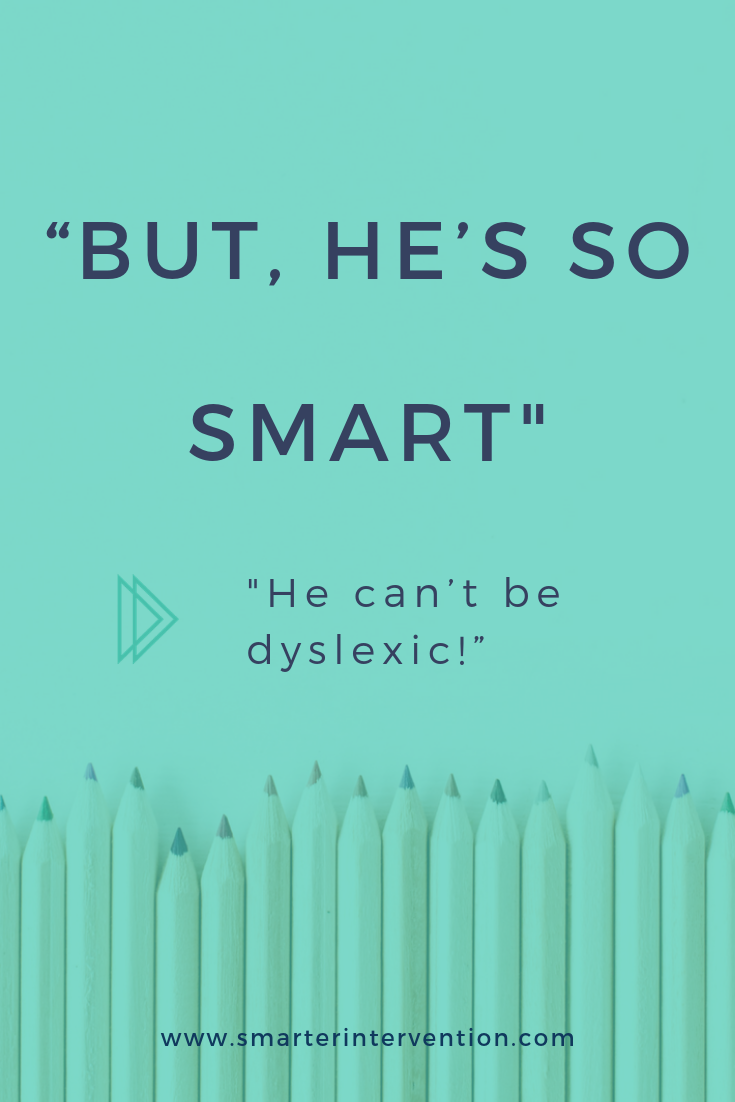“But, he’s so smart, he can’t be dyslexic!”
If you’ve ever thought this (or heard someone say it) you’re not alone.
One of the most common misunderstandings about dyslexia is the belief that a smart student couldn’t possibly have trouble reading. But this assumption is exactly why so many bright students with dyslexia go unidentified for far too long.
Dyslexia Has No Link to Intelligence
In fact, many students with dyslexia have average to above-average IQs. They are often curious, insightful, and deeply engaged with learning, especially when it comes to rich stories, interesting topics, or verbal conversations.
But dyslexia isn’t about intelligence. It’s about how the brain processes written language, particularly the relationship between letters and sounds. And for many gifted students, this creates what we call a splintered profile.
What Is a Splintered Profile?
When reviewing classroom data, I often look for students whose scores show a sharp contrast:
High scores in verbal reasoning or comprehension
Low scores in decoding, spelling, or fluency
These students are often dismissed as having “just had a bad day” when their test scores don’t line up. But that mismatch is actually a hallmark of dyslexia, and a major reason it can fly under the radar.
Book Lovers… Until It’s Their Turn to Read
One of my surest indicators that a child may have dyslexia?
They’re the student who hangs on every word during read-aloud time, but shuts down when asked to read independently.
These students:
Make deep, nuanced connections during class discussions
Ask brilliant questions
Recall rich vocabulary
Love characters, stories, and language…
…until they have to decode the words themselves. Then, their focus shifts entirely to the act of decoding, leaving little bandwidth for comprehension or analysis.
Embracing ‘Ear Reading’
When we allow students to access texts through audiobooks or read-alongs, their comprehension abilities can shine. That’s not a shortcut, it’s smart instruction.
Some of our favorite tools include:
Public library apps like Libby
Offering multiple pathways to engage with text is not lowering the bar, it’s leveling the playing field.
Don’t Let the Task Define the Learner
We often evaluate students based on how well they complete a specific task. But reading fluency is not the same as comprehension, and decoding isn’t the only path to deep thinking.
Your brightest students may be struggling silently.
Don’t let assumptions about intelligence stand in the way of identification or support.
Concerned about dyslexia?
We’ve created a free checklist that highlights the most common signs of dyslexia across ages and settings, including what to look for in conversation, reading tasks, and writing.
👉 Download the Dyslexia Symptoms Checklist here!
Want to Go Deeper?
Check out our On-Demand Professional Development Training:
“What Dyslexia Really Looks Like: From Identification to Intervention”
In this training, we walk through:
How dyslexia presents differently across ages and grade levels
Why some students “fly under the radar” until academic demands increase
Practical ways to identify patterns early and connect students with the right support (from accommodations to instruction
How to manage conversations around dyslexia
You don’t want to miss this one!
*Suggestions to outside websites are not an endorsement for all content and information contained there. We do not receive any incentives for these recommendations.

